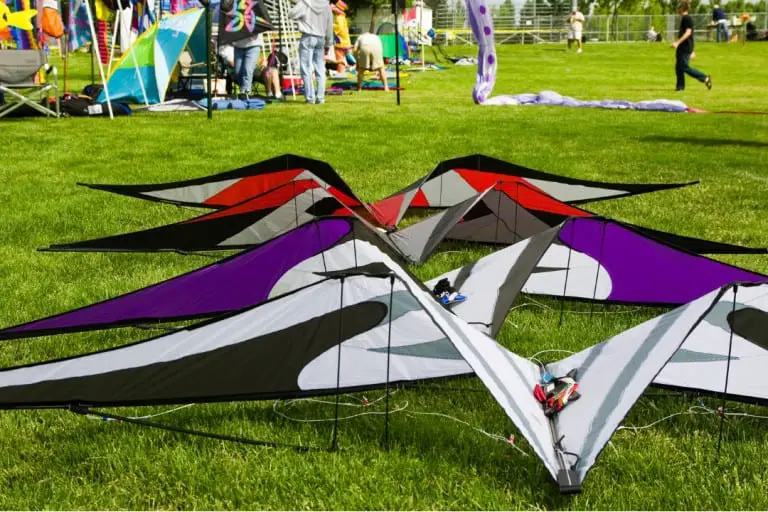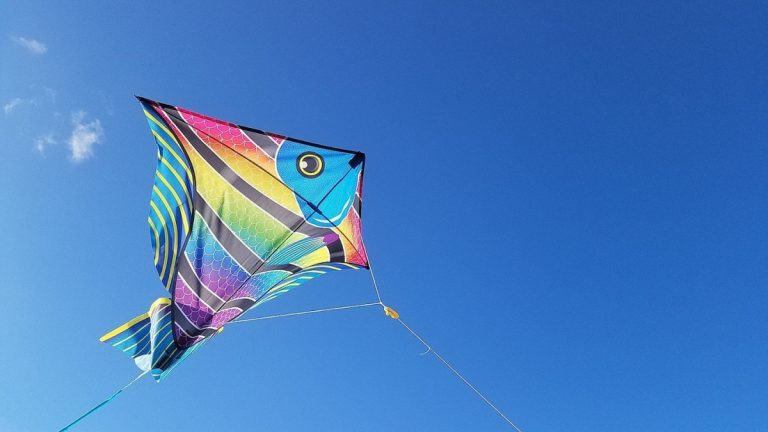A Guide On How To Cut A Kite: Technique For Beginners
Cutting down kites is a common practice during kite fighting. There are specific maneuvers that kite operators should do to win. This article covers techniques that are essential to be successful in kite fighting.
There are two primary techniques used in kite fighting that aid in winning. These are the release cutting and the pull cutting.
How do You Cut the Shape of a Kite?
Kiting is a sport that is enjoyed by many. Kids, in particular, can get off screens and enjoy the outdoors with this sport. Kites can also be easily made at home, making the process even more fun as owners can personalize the kite. The diamond kite is one of the simplest kites to make.
The first portion of kite making is building a frame. The first step involves combining one horizontal and one vertical stick; this frame will hold the kite sail in place. The choice of sail material will be essential in cutting out the required sail.
Various materials, such as plastic bags, fabrics, or paper, are suitable for making the kite sail. If looking to decorate in the future, picking the right sail will provide room for this. Getting a white garbage bag, for example, will ensure the kite’s lifespan is increased and will make decorating easy (Source).
The material used should be laid on the ground for ease in cutting the pattern of the sail. Attach the sail at the center of the frame after cutting and outline it. Place a ruler from the top to the wingtip on the right and mark each section.
The ruler should then be taken and placed from the same wingtip to the bottom and then marked. Repeat the same process on the left side of the frame.
With the help of the ruler and a pen or pencil, the diagonal lines should create a diamond outline, which is then visible upon removal of the frame.
However, cutting the sail should not be directly on the outline; the area cut should be a few inches wider (2inches). The extra space is needed to wrap the sail around the frame and secure its attachment. Use cutters or scissors to cut the material.
The diamond kites, sled, and delta kites are easy to make at home. However, one should pay attention to the instructions manual’s dimensions. Large-sized kites would be best suited for teenagers and adults. Children could have trouble flying them in the moderate wind (Source).
The three kite designs have qualities that make them stand out. The diamond kites have tails that keep them stable and pointed towards the wind. The shape makes them reliable during flight. Sled kites are easily portable and rarely get damaged during transportation. Deltas are considered better than the other two because of their performance.
Making kites does require precision, which makes the process daunting for others. However, one can develop a great kite with patience (Source).
How do you Fly a Kite Step by Step?
During summer afternoons and windy springs, taking the kite out can be exciting for kite flyers. It is a perfect time for beginners to start on their kite-flying adventure. However, there are essential factors to consider before flying the kites. These include the type of kite chosen and the kite’s location (source).
When purchasing a kite to fly, beginners should consider kites that are easy to maneuver. Winds favorable to fly in at this stage would be light to medium winds (6-15mph). Good examples of such kites are the diamond and delta kites.
Kite operators could also try using single-line kites. Most often, such kites are easy to control. Light winds are favorable for such kites. If operators wish to fly in stronger winds, they should consider adding a tail to the kite.
Wind conditions will determine whether it’s safe to fly a kite. Ideal wind speeds favorable for flying the kite range between 5-25mph. Checking how leaves, bushes, and trees react to the wind can be a great way of determining if the flying conditions are perfect.
A major obstacle when flying kites is turbulence. Turbulence can cause kites to crash. Areas that experience turbulence is those with hills, trees, and buildings around. It is why kite operators should fly their kites in open spaces. It includes farms, parks, and the beach (Source).
When flying, kite operators should have their eyes on the kite to mitigate any mid-flight problems to avoid crashes. Be observant with power lines as they can conduct electricity when damp, resulting in electrocution (Source).
How do You Always Win a Kite Fight?
Kite fighting is a favorite activity among kite owners. Kites preferable for fighting are small, flat, and use single lines (Source).
A long time ago, Asian fighters would coat their kite strings with rice glue and crushed glass. Over time people opted for stiffer cement and various abrasives. The essence of making this addition was to ensure the line was tougher (Source).
Manja is the line that most kite fighters use. It is very sharp and coated with abrasives. However, not all kite fighting lines have the entire line covered with Manja. Some attach an ordinary string on the tip of the kite facing the flyer and Manja on the other end; it helps avoid hand injuries (Source).
The rules of kite fighting competitions differ depending on the region. Two contestants or more are involved in the kite fighting competition. The idea is to cut down the kite of competitors using one’s kite. The person with their kite in the air, after all, other kites have been cut down, is the winner.
There are two methods that contestants use to cut down kites. It is the pull cutting and the release cutting method. In release cutting, once the opponents’ lines are in contact, they will reel outlines until one of them gets cut. On the other hand, pull cutting requires a swift pulling of strings. Frequently, kite fighting events limit only to the neighborhoods. However, organized competitions have already happened in the past.
Unfortunately, kite fighting proves to be hazardous, causing severe injuries and even death—areas where such incidents occur include Chile, Brazil, Pakistan, and India. People have swapped cotton lines with synthetic lines coated with Manja. Some countries have implemented restrictions such as banning cutting lines to curb the problem (Source).
How Do You Cut Other People’s Kites?
The kite becomes unstable and rocks from side to side when a reduction of the tension of the line occurs. It happens when the kite operator moves into the wind. The kite willingly moves in the operator’s preferred direction once they apply tension at the right time (Source).
At times a spool is used. Usually, it offers rapid winding. However, the kite flyer will often hold the line directly instead of using the spool.
Kite fighting aims to cut the opponent’s kite. However, sometimes it involves capturing the kite of the opponent. The sport can be played by individuals or teams, albeit considering both human life and wildlife away from the risks of the sport (Source).
Summary
Kite fighting can be a dangerous sport. Adequate care is necessary when handling the Manja string. For example, kite operators should wear protective clothing such as gloves. They should also fly in areas with wide spaces.




